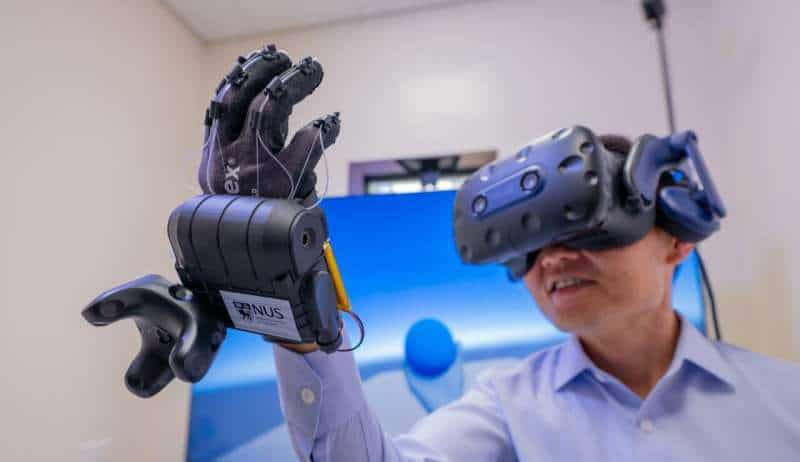What if you could feel raindrops or a beating heart, or train in competitive archery, all from the comfort of your home? That game-changing immersiveness could bring a new dimension to virtual environments, allowing users to experience the world of imagination with a high degree of realism.
A recent invention by a team of researchers from NUS promises to substantially enhance a user’s sense of touch in virtual reality (VR), with the aim of delivering a more authentic and immersive experience within the metaverse. Their new invention—called HaptGlove—is an untethered and lightweight haptic glove that provides users with both skin-like and movement sensations when interacting with a virtual object.
While the concept of haptic gloves is not new, current technologies are not able to give users a realistic sense of touch. For example, typical haptic glove designs in the market use vibration motors, which could not accurately replicate the real-world sense of touch such as simulating the hardness and shape of a VR object. Other haptic gloves use pneumatic actuators, which are devices that generate a sense of pressure, but their bulky designs greatly limit the user’s movement.
“My experience with VR and the metaverse has always been unsatisfactory. VR should not be just about a visual and auditory experience; it should present the ability to interact with VR objects. However, current methods of pressing on a virtual panel or interacting with another avatar lack the sensation of touch that we experience in the real world. This prompted me to work with my team to develop a haptic glove to enable ‘physical’ touch in the virtual world,” said Professor Lim Chwee Teck, who is the Director for the Institute for Health Innovation & Technology (iHealthtech) and leader of the research team.
Prof Lim and his team went on to develop HaptGlove, a portable and highly flexible haptic glove that enables users to have immersive touch and feel of VR objects with unparalleled realism in VR experience. HaptGlove incorporates lightweight pneumatic control with the team’s latest developed microfluidic sensing technology to reduce its size and weight significantly, and does not require bulky accessories.
“The HaptGlove’s unique design allows users to interact with the virtual world more naturally and realistically, which would give users unobtrusive recreational or competitive sensation in VR,” added Prof Lim, who is also from the Department of Biomedical Engineering under the NUS College of Design and Engineering.

